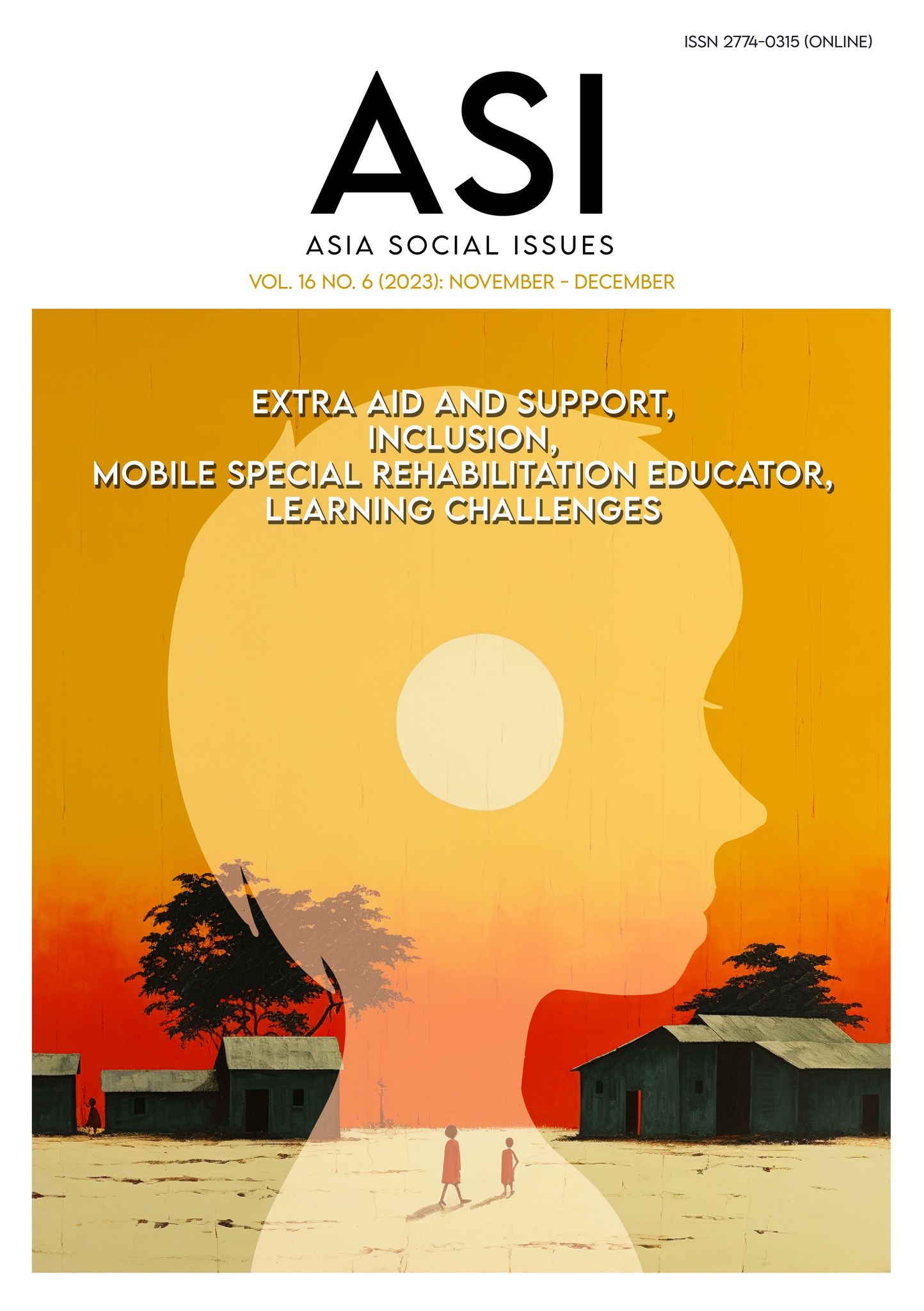Factors Predicting to Violent Behavior of Youth in Muang District, Trang Province
Main Article Content
Abstract
Nowadays, it is found that the age of offenders due to violence has been gradually decreasing until it becomes an issue that needs to be addressed as urgently as possible because violent behavior is the source of many problems. Therefore, there is an interest in studying the factors predicting the violent behavior of youth in Muang District, Trang Province. The sample size was 379 youths living in Muang District, Trang Province. The research instrument was a questionnaire. Data were analyzed using statistical methods; Stepwise multiple regression analysis. The results found that the factors predicting the violent behavior of youth were: overall attitude to violence, permissive parenting style, attitudes towards verbal violence behavior, having a mother who works as a farmer, educational status, and uninvolved parenting style. The most influencing factor in violent behavior was the overall attitude to violence.
Article Details

This work is licensed under a Creative Commons Attribution-NonCommercial-NoDerivatives 4.0 International License.
Copyright: CC BY-NC-ND 4.0
References
Baumrind, D. (1971). Current patterns of parental authority. Developmental Psychology, 4(1, Pt.2), 1-103.
Child and Adolescent Mental Health Rajanagarindra Institute, Department of Mental Health. (2013). Adolescent mental health. Retrieved from https://new.camri. go.th
Chitayasothon, D. (2009). Diana Baumrind Diana Baumrind’s Parenting Styles. Academic University of the Thai Chamber of Commerce journal, Humanities and Social Sciences, 29(4), 173-187.
Chusak, T., Sirirat, C., & Nonpala, J. (2020). Factors associated with stress among employees in a factory, Saraburi Province. Research and development Institute, Valaya Alongkorn Rajabhat university royal patronage, 15(1), 47-57.
Department of Women’s Affairs and Family Development. (2013). Policy and strategy for family Institutedevelopment (2014-2021).Bangkok, Thailand: The office of Ministry of Social Development and HumanSecurity.
Family Institute Promotion Division. (2001). Family violence statistics for the year 2021. Retrieved from https://opendata.nesdc.go.th/dataset/https-drive-google-com-file-d-16qsyunvqmzxnm4krc_5xee_zoxffxmg4-view-usp-sharing.
Gibson, J. (2000). Organizations, behavior, structure, processes (9th eds.). New York: Mc Graw-Hill.
Jenkitiworapong, P., & Suwanphakdi, P. (2018). Studied media exposure, attitude, behavior and media literacy of using hate speech among Thai teenagers in Bangkok via Facebook. Journal of communication and management NIDA (e-Journal), 4(3) 79-93.
Maccoby, E., & Martin, J. (1983). “Socialization in the context of family: Parent-child interaction” (pp. 1-101) In Mussen, P. H. (Ed.). Handbook of child psychology, vol. 4 socialization, personality, and social development. New York: Wiley.
Poung-ngamchuen, J., Poonnoy, P., Buwjoom, T., & Sang-U, I. (2018). Factors’ effecting health of farmers in Muang District, (Lampun Province). Journal of MCU Social scienceReview, 7(2), 319-331.
Prasittipan, S. (2003). Research methodology of social science. Bangkok, Thailand: Fuanfha Company Printing.
Registration statistics system. (2018). The number of Thai population in each age group. Retrieved from http://stat.bora.d.pa.go.th/stat/statnew/statTDD
Sangthong, R., & Sai Ngam, D. (2019). Thai youth, who has a problem? Retrieved from https://cads.in.th/cads/media/upload/15680220797.%20%E0%B9%80%E0%B8%A2%E0%B8%B2%E0%B8%A7%E0%B8%8A%E0%B8%99%E0%B9%84%E0%B8%97%E0%B8%A2%E0%B9%83%E0%B8%84%E0%B8%A3%E0%B8%A1%E0%B8%B5%E0%B8%9B%E0%B8%B1%E0%B8%8D%E0%B8%AB%E0%B8%B2.pdf.
Silanoi, L., & Chindapraser, K. (2019). The use of rating scale in quantitative research on social sciences, humanities, hotel and tourism study. Journal of Management Science, Ubon Ratchathani University, 8(15) 112-126.
Siriattakul, P., & Limaroon, N. (2021). Aggressive behavior in late adolescence: An applicationof structural equation modeling. Journal of Interdisciplinary Research: Graduate Studies, 10(2), 35-43.
Sukadaecha, R. (2020). Child-rearing of Thai families: A systematic integrated literature reviews. Journal of Nursing Science & Health, 43(1), 1-9.
Thairath online. (2020). News of crime in youth. Retrieved from https://www.thairath.co.th/news/local/south/1912232
Trang Juvenile and Family Court. (2022). Statistics of youth offenses in Trang Province. Retrieved from https://trnjc.coj.go.th/th/page/item/index/id/1
Upamairat, T., Kongsuwan, W., & Suttarangsee, W. (2019). The effect of a self-regulation program on attitude toward violence and self-behaviors of adolescent students. The journal of psychiatric nursing and mental healt, 33(2), 13-19.
Yamane,T. (1970). Statistic: Introductory analysis (2nd eds.). New York: Harper and Row.
Yudofsky, S. C., Silver, J. M., Jackson, W., Endicott, J., &Williams, D. (1986). The Overt aggression scale for the objective rating of verbal and physical aggression. Am J Psychiatry, 143(1), 35-39.


